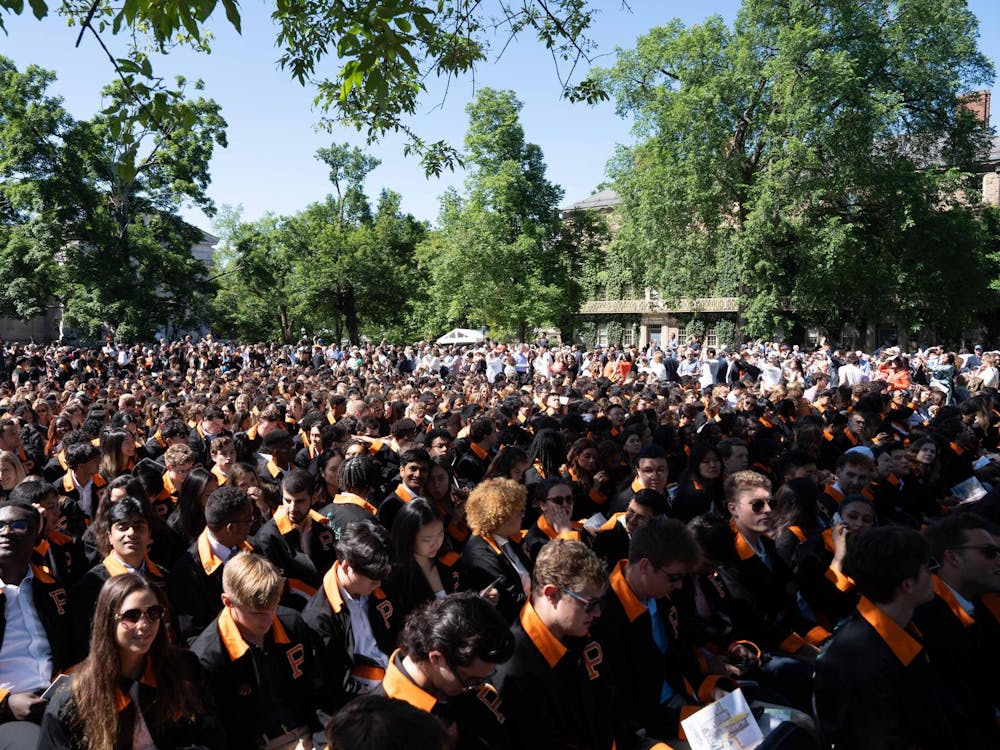It's mid-April, and we've already had several 90 degree sweltering days. This winter we set new highs for monthly average global temperatures. According to the Intergovernmental Panel on Climate Change, which represents the consensus among climate scientists, the climate has warmed, and it is likely that at least half of the recent warming was caused by humans. And yet the US government is still refusing to ratify the Kyoto protocol and urging other countries to also back out, still striking down legislation that would increase the fuel efficiency of the American automotive fleet and thereby reduce emissions of greenhouse gases (GHGs), still slashing the budgetary allotment for developing renewable energy sources, and still doing countless other things to contribute to further global warming.
The time is ripe for a scathing op-ed on climate change. But it's Earth Day, so I'll write about something vitally important that no one talks about. Our forests.
Why? The forests around here are actually growing! And we recycle our paper. So what's the problem?
It's Earth Day. Time to think globally. Only half of the planet's original forest remains, after major losses in the last 30 years. Moreover, only 20 percent of the original forest occurs in blocks large enough for ecosystem sustainability. And of that sustainable — 'frontier' — forest, half is boreal forest in the far north, housing only a handful of tree species compared to many thousands in the tropical forests that directly support 50-90 percent of the world's biodiversity.
This is a recipe for global biodiversity collapse. Hundreds of thousands to millions of species mete out a fragile existence in unsustainable patches of threatened forests. As development encroaches, these species will ride 'the extinction vortex' to their doom. They're not extinct yet, but if we don't act soon, many will be..
It's Earth Day, dammit! Also time to act locally. But what can we do here?
Because of the increasingly global economy, a large component of our massive demand for wood products (easily tops in the world) is supplied by foreign nations. Don't use much wood? Look around you: chances are much of your furniture is wood, plus most of your floors and the frame of your house.
How about paper? About half of our wood goes to making paper to feed our steadily growing demand. The electronic information age? Sure, we do a lot of web-surfing! We also do a whole lot of printing: web sites, emails, attachments, etc. You name it, we print it! Usually single-sided, often straight from the pulp of freshly-cut trees.

We imagine that we're absolved of guilt because our paper use is a nearly-closed loop: our paper says it's X percent recycled, and when it's done, we recycle it again. Unfortunately, this is wrong on two fronts.
With incoming paper, 'recycled' only means it came from the 'waste' stream of freshly-cut wood at the mill. It got processed once, was deemed waste, then got processed again. Unless it says "post-consumer waste," it never saw the inside of a recycling bin.
With outgoing paper, 'recycling' only means that it rides around in a recycling truck. Many municipalities collect recycled paper, then dump it with the rest of the waste. They simply don't know what to do with it, because no one's buying it.
So what can you do to save the forests this Earth Day?

First, use less paper. Print double-sided, or on once-used one-sided paper. Second, when buying, get 100 percent PCW paper, or paper from alternative fibres (like waste rice straw). Third, urge your institutions to do number two. Write — or better yet, talk — to whoever makes purchasing decisions in your institution, and whoever has the final say.
Fourth, think beyond paper, and learn the source of wood before you buy it. Make sure it's Forest Stewardship Council (FSC) approved. Never buy tropical hardwoods like mahogany: it's our obsession with such wood that drives the destruction of rainforests. In some cases, whole acres are cut for a few precious trees!
Fifth, support or join organizations fighting for the above, like Rainforest Action Network, World Resources Institute, World Wildlife Fund, and Greening Princeton.
Greening Princeton (greenprinceton@topica.com) — one of several great campus environmental groups — is pursuing institutional purchasing issues. They've already achieved some important results, like negotiating a paid internship for researching environmentally friendly purchasing, whose results will help direct University policy. They've been successful because the University is on the same page. In fact, President Tilghman initiated an environmental committee to improve the institution's environmental record, which includes Mike McKay; Janet Gruschow and Don Weston.
Let's add a sixth: cCntact those above and thank them for their efforts. Encourage them to do all they can on these issues, and ask them what you can do to help.
Let's finish with a seventh: Make every day Earth Day. The Earth never takes a break from being our planet, so why should we take a break from caring for it? Kai Chan is a graduate student in the Ecology and Evolutionary Biology department from Toronto, Canada. He can be reached at kaichan@princeton.edu.







